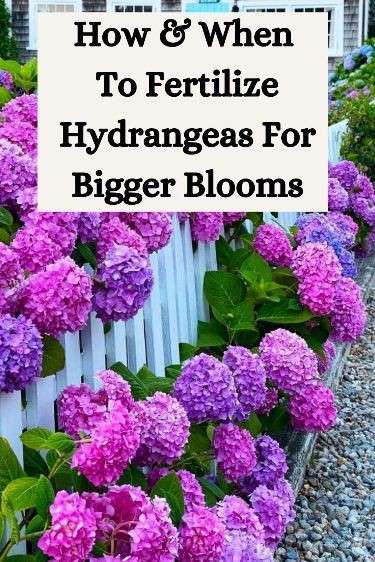Unlock the Secret to Bigger Hydrangea Blooms: The Ultimate Fertilizing Guide!
Hydrangeas are beloved for their stunning, showy blooms that can transform any garden into a vibrant paradise. If you’ve been dreaming of bigger and more beautiful hydrangea flowers, understanding the right fertilizing techniques and schedule is key. Here’s your ultimate guide to fertilizing hydrangeas for optimal growth and dazzling blooms.
#### Why Fertilize Hydrangeas?
Fertilizing hydrangeas provides them with essential nutrients that promote healthy growth and more abundant, larger blooms. Proper fertilization:
- **Boosts Flower Size* Ensures your hydrangeas produce larger, more impressive blooms.
- **Enhances Color* Helps in achieving more vibrant and consistent flower colors.
- **Improves Overall Health* Strengthens the plant, making it more resistant to pests and diseases.
#### When to Fertilize Hydrangeas
Timing is crucial when it comes to fertilizing hydrangeas. Here's a general timeline to follow:
1. **Early Spring (March-April)*
- As soon as the ground thaws and new growth starts to appear, apply a slow-release, balanced fertilizer (such as 10-10-10 or 14-14-14). This provides essential nutrients to support initial growth and budding.
2. **Mid-Spring (May)*
- Apply a second dose of slow-release fertilizer. This helps sustain the growth spurt and supports the development of flower buds.
3. **Early Summer (June)*
- If your hydrangeas are not blooming as expected, apply a bloom-boosting fertilizer with higher phosphorus content (such as 10-20-1. Phosphorus encourages flower production and enhances bloom size.
4. **Late Summer (August)*
- Apply a final light dose of balanced fertilizer to help the plants store nutrients for the winter. Avoid high nitrogen fertilizers at this stage to prevent excessive foliage growth.
#### How to Fertilize Hydrangeas
1. **Choose the Right Fertilizer*
- Use a balanced, slow-release fertilizer for general feeding.
- For bloom enhancement, select a fertilizer with higher phosphorus content.
2. **Apply Fertilizer Correctly*
- **Granular Fertilizer* Sprinkle evenly around the base of the plant, avoiding direct contact with the stems. Water thoroughly to help the fertilizer penetrate the soil.
- **Liquid Fertilizer* Mix according to the package instructions and apply directly to the soil around the plant base. Liquid fertilizers are quickly absorbed and can provide a rapid nutrient boost.
3. **Monitor Soil pH*
- Hydrangea bloom color can be influenced by soil pH. For blue flowers, maintain a more acidic pH (5.2-5.5) using soil acidifiers. For pink flowers, aim for a neutral to alkaline pH (6.0-6.2) by adding lime to the soil.
4. **Regular Maintenance*
- Mulch around the base of the plant to retain moisture and suppress weeds.
- Ensure hydrangeas receive adequate water, especially during dry spells, as consistent moisture is crucial for healthy growth.
#### Tips for Bigger, Better Blooms
- **Prune Correctly* Prune hydrangeas at the right time based on their variety. For example, prune old wood bloomers after they flower, while new wood bloomers can be pruned in late winter or early spring.
- **Provide Adequate Sunlight* Hydrangeas thrive in partial to full sunlight. Ensure they receive at least 4-6 hours of sunlight daily.
- **Water Wisely* Deep, consistent watering encourages strong root development and supports larger blooms.
### Ready to Transform Your Garden?
With the right fertilizing schedule and techniques, you can enjoy bigger, more vibrant hydrangea blooms that will be the envy of every gardener. Follow these tips and unlock the full potential of your hydrangeas for a garden bursting with beauty.
**Hashtags*
#gardeninghacks #hydrangealovers #biggerblooms #gardengoals #flowerpower #greenthumb #plantcaretips #bloomboost #beautifulgardens #horticultureheaven #gardeninspiration #homegardening






